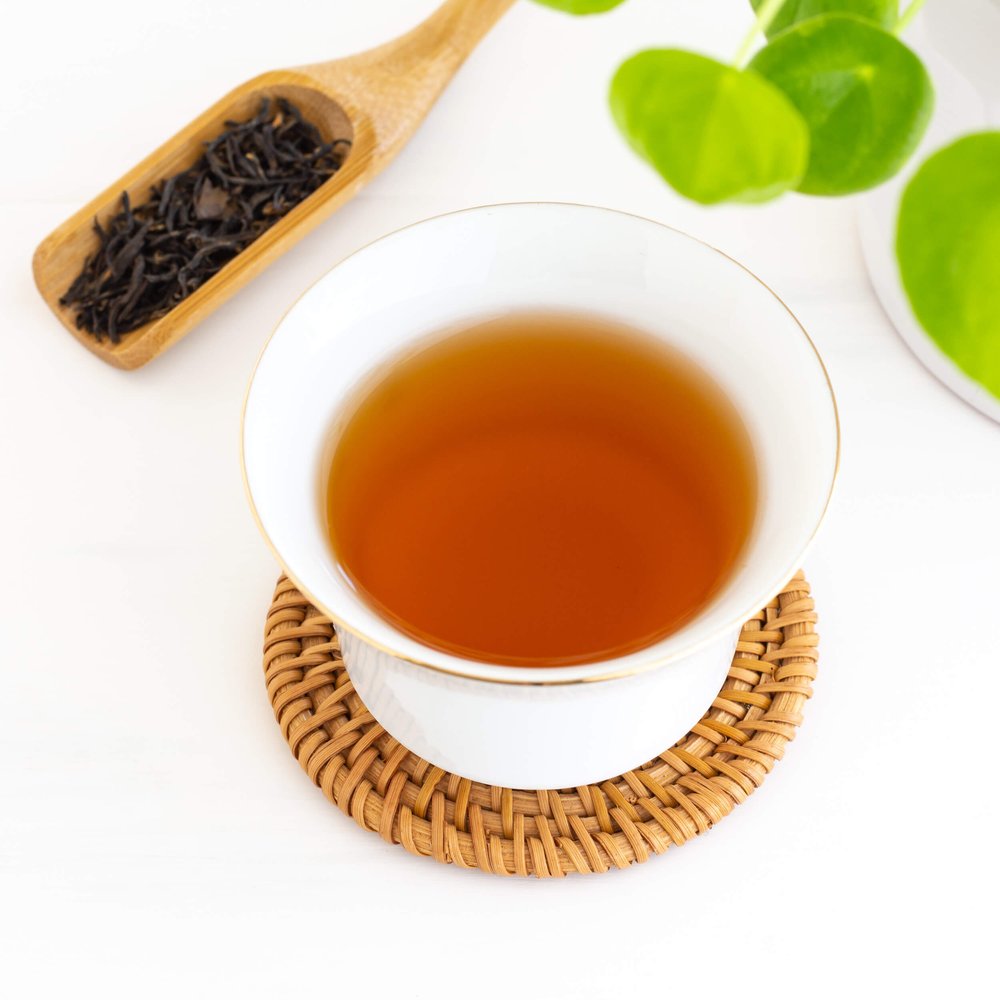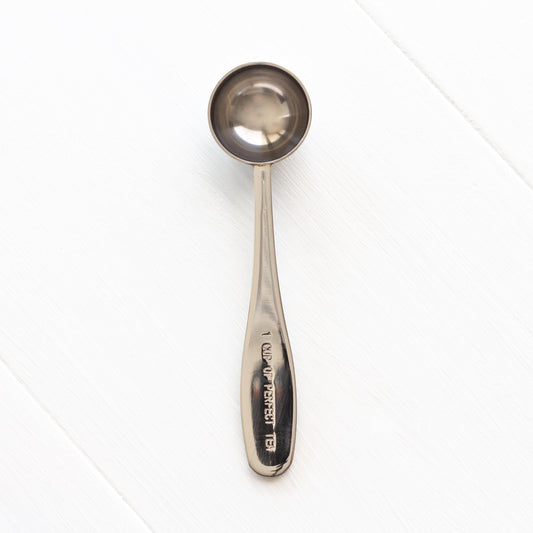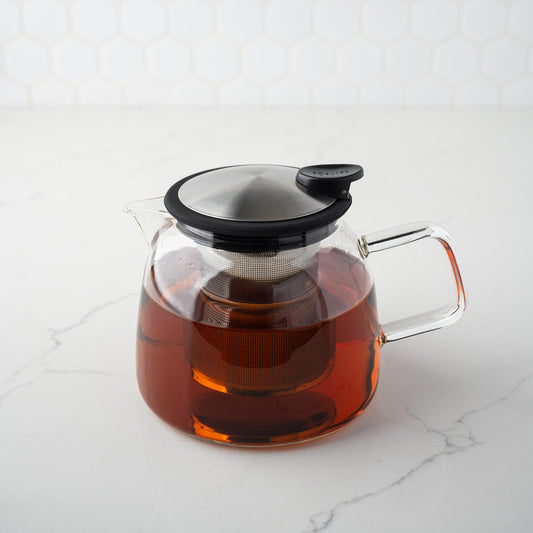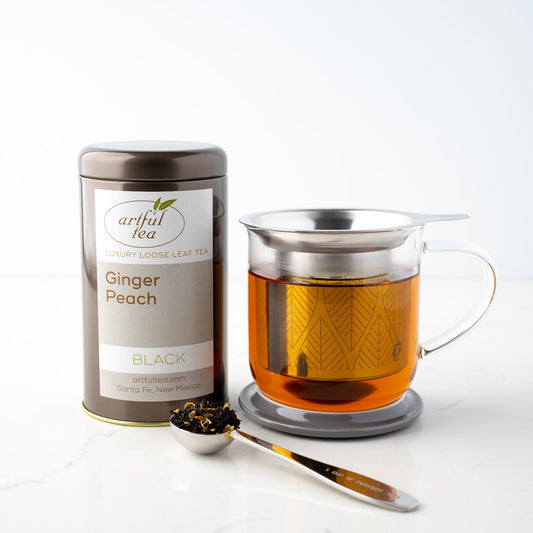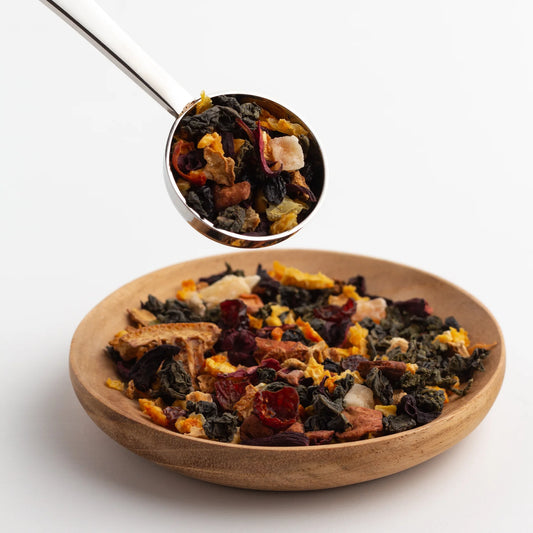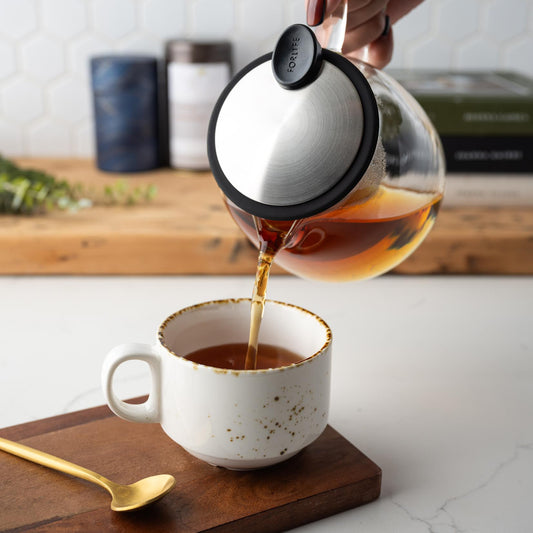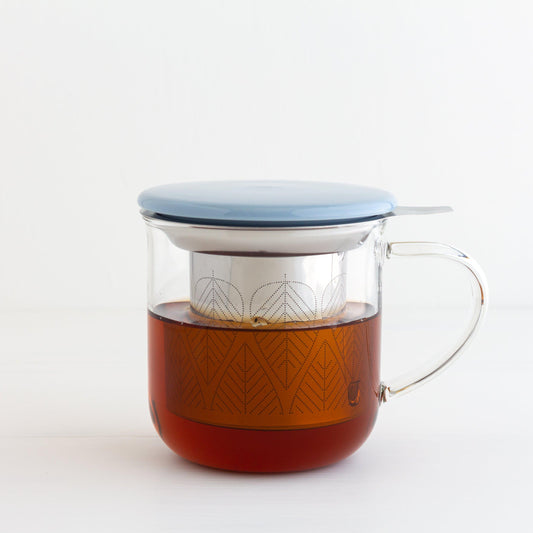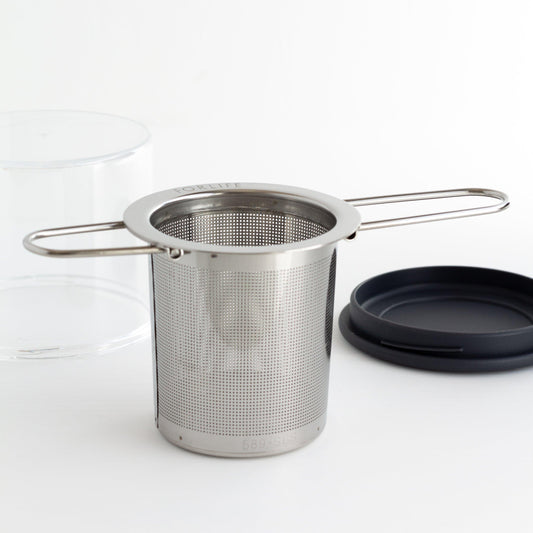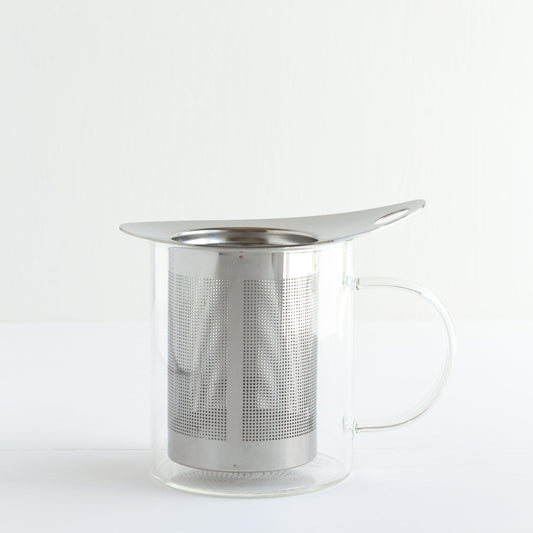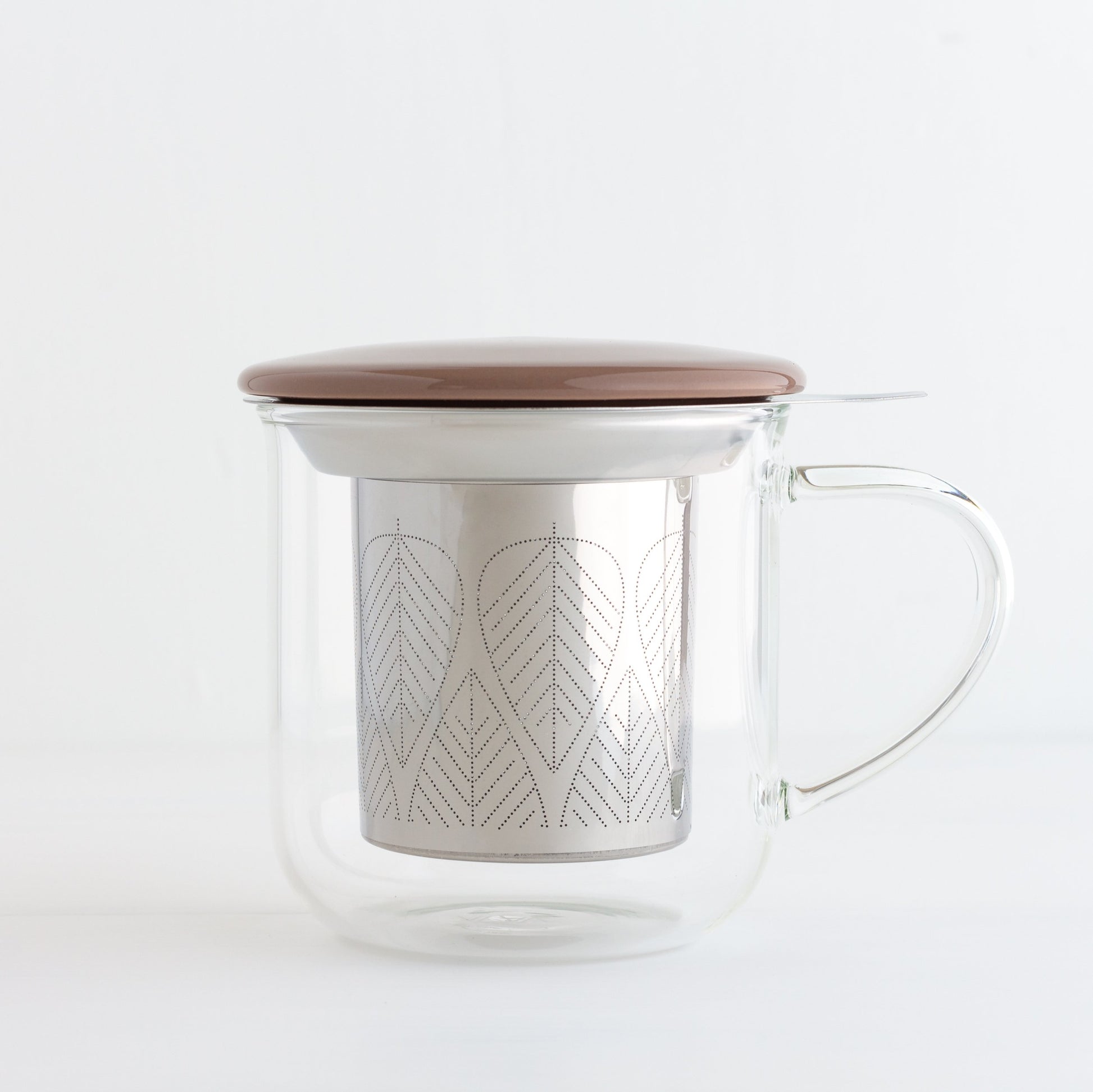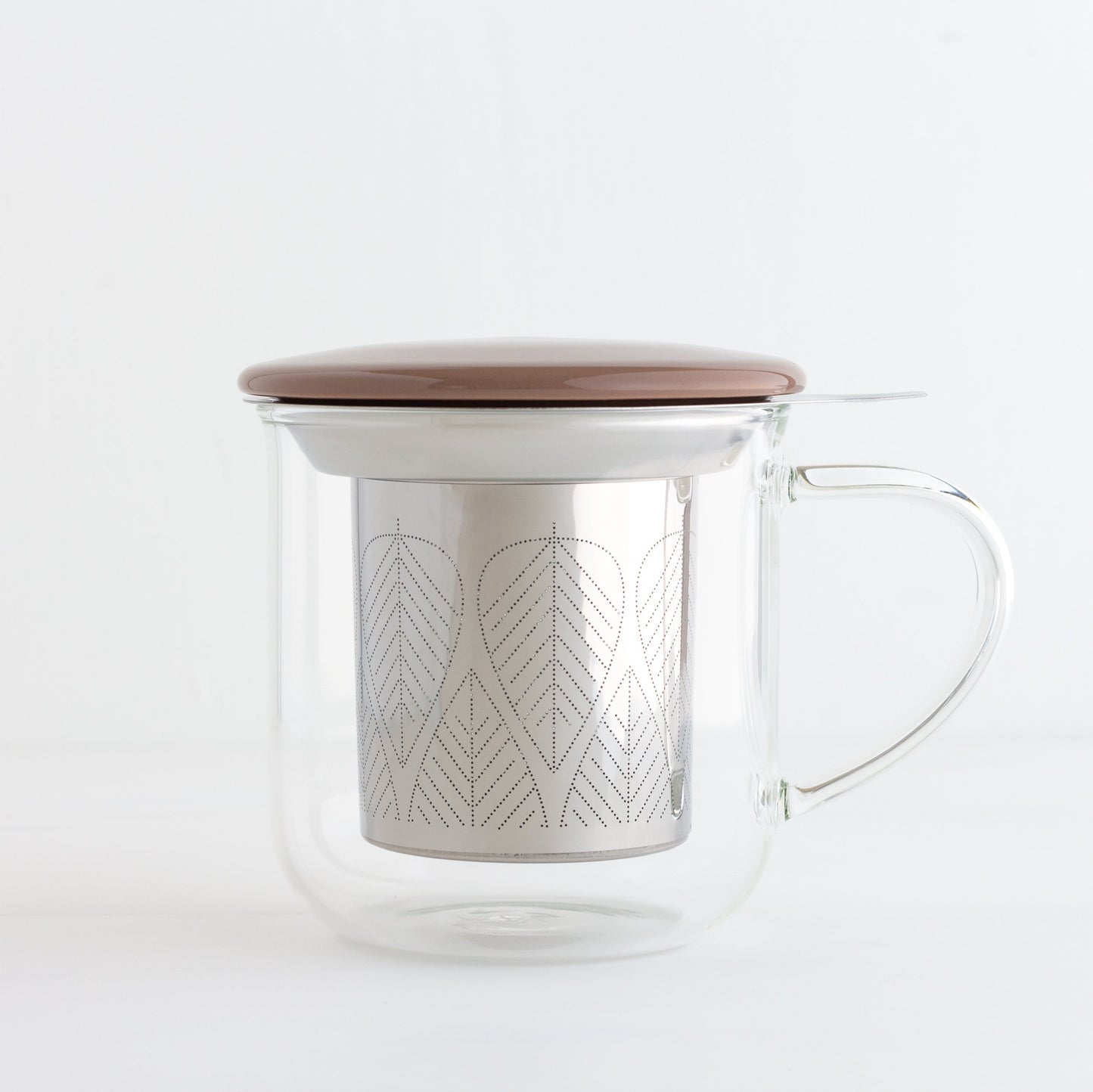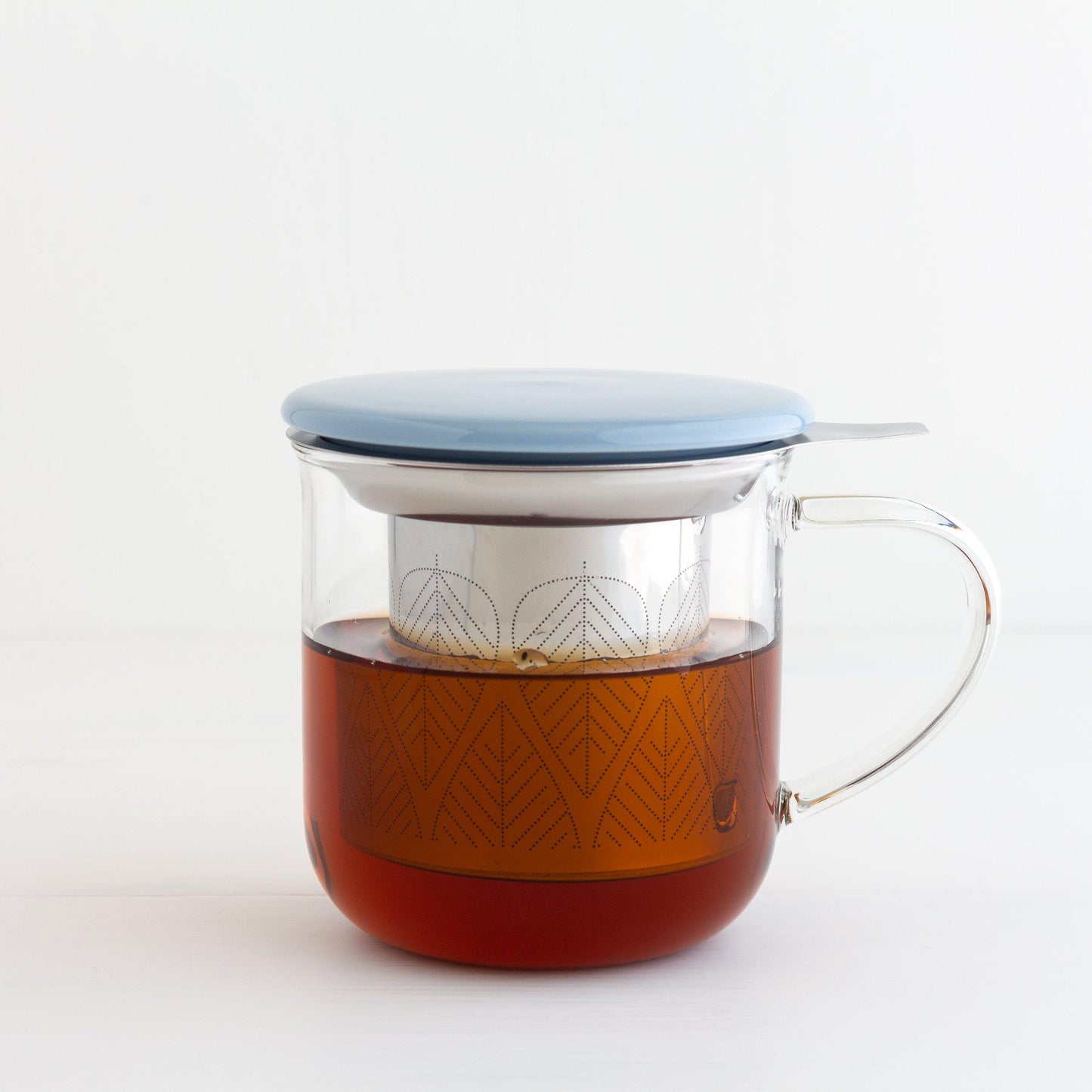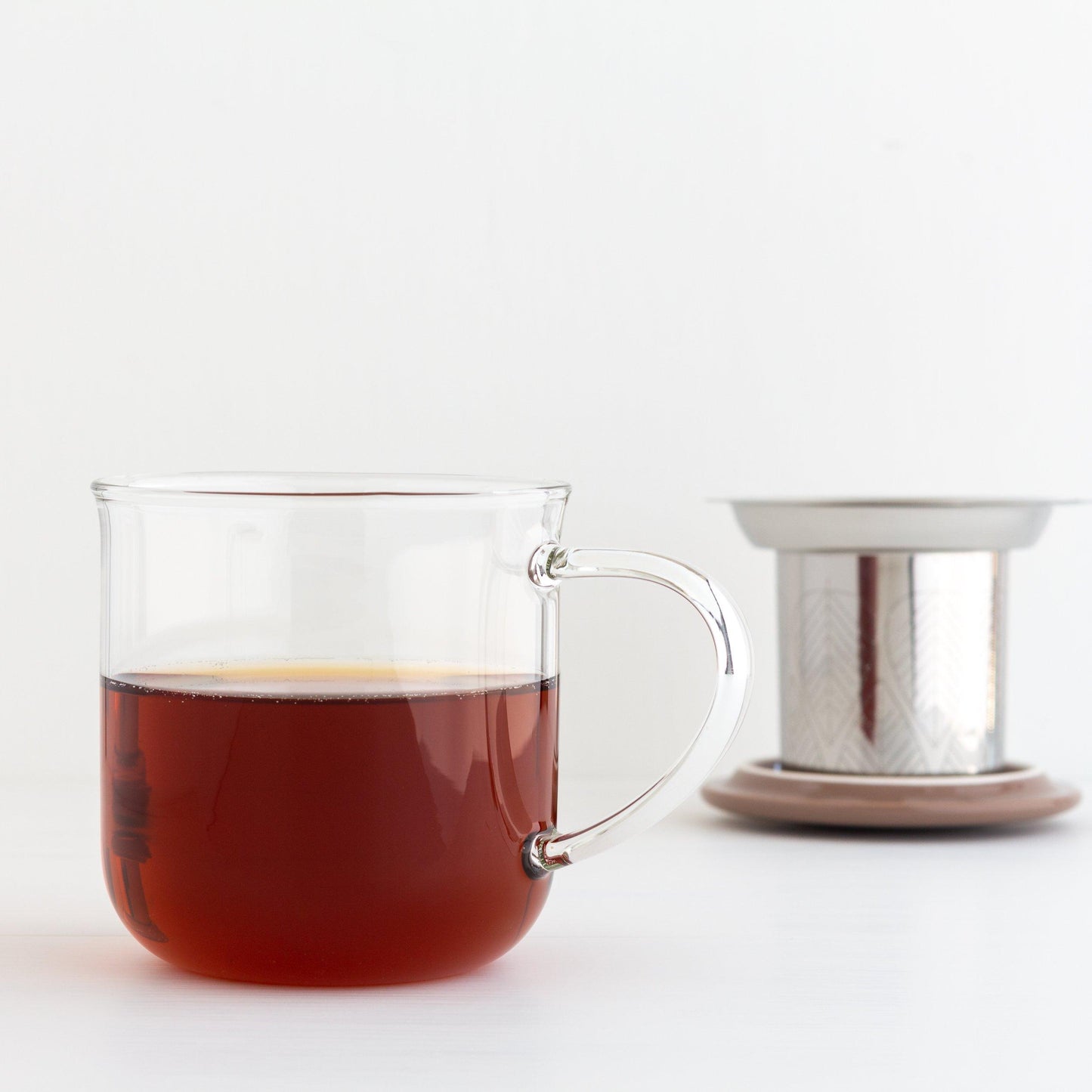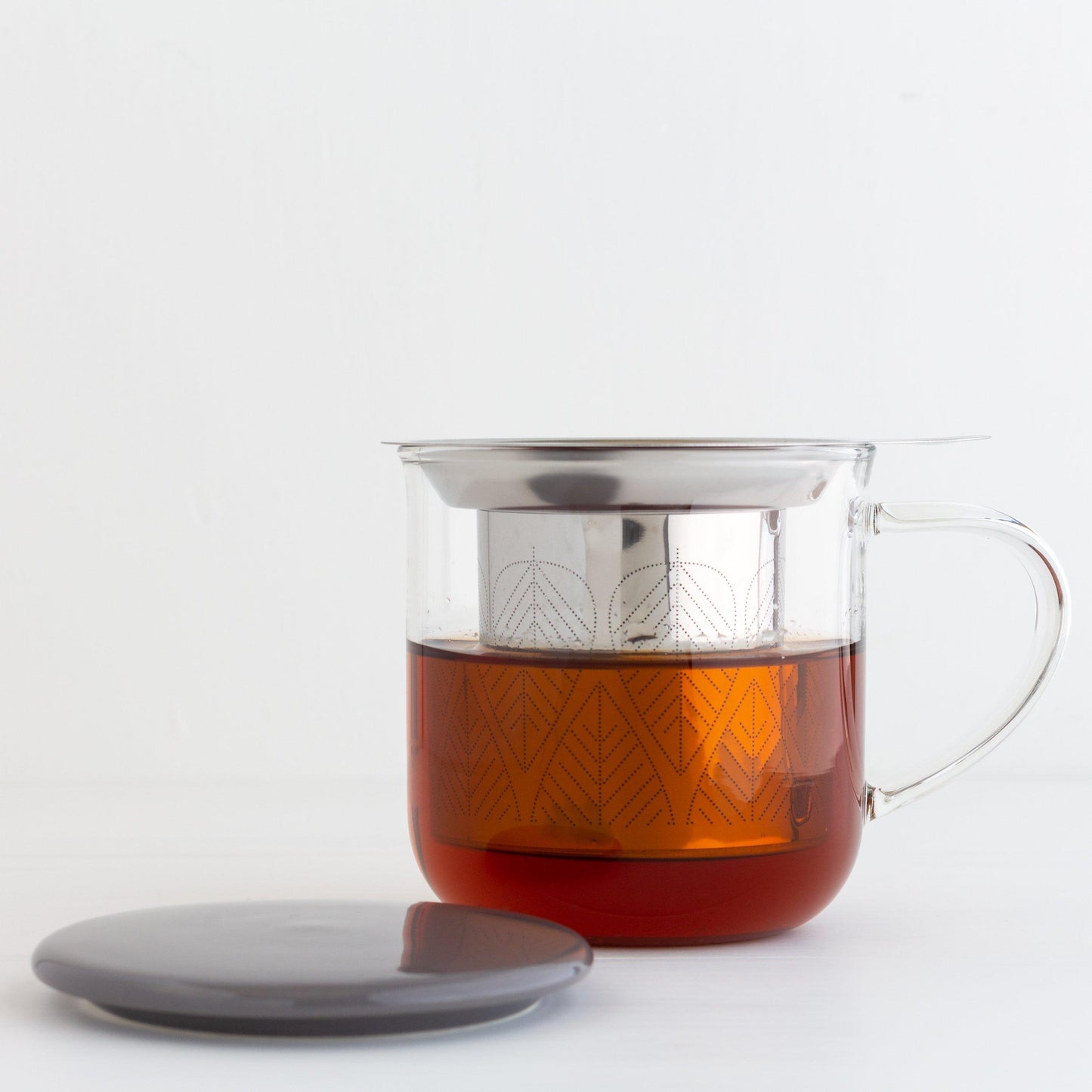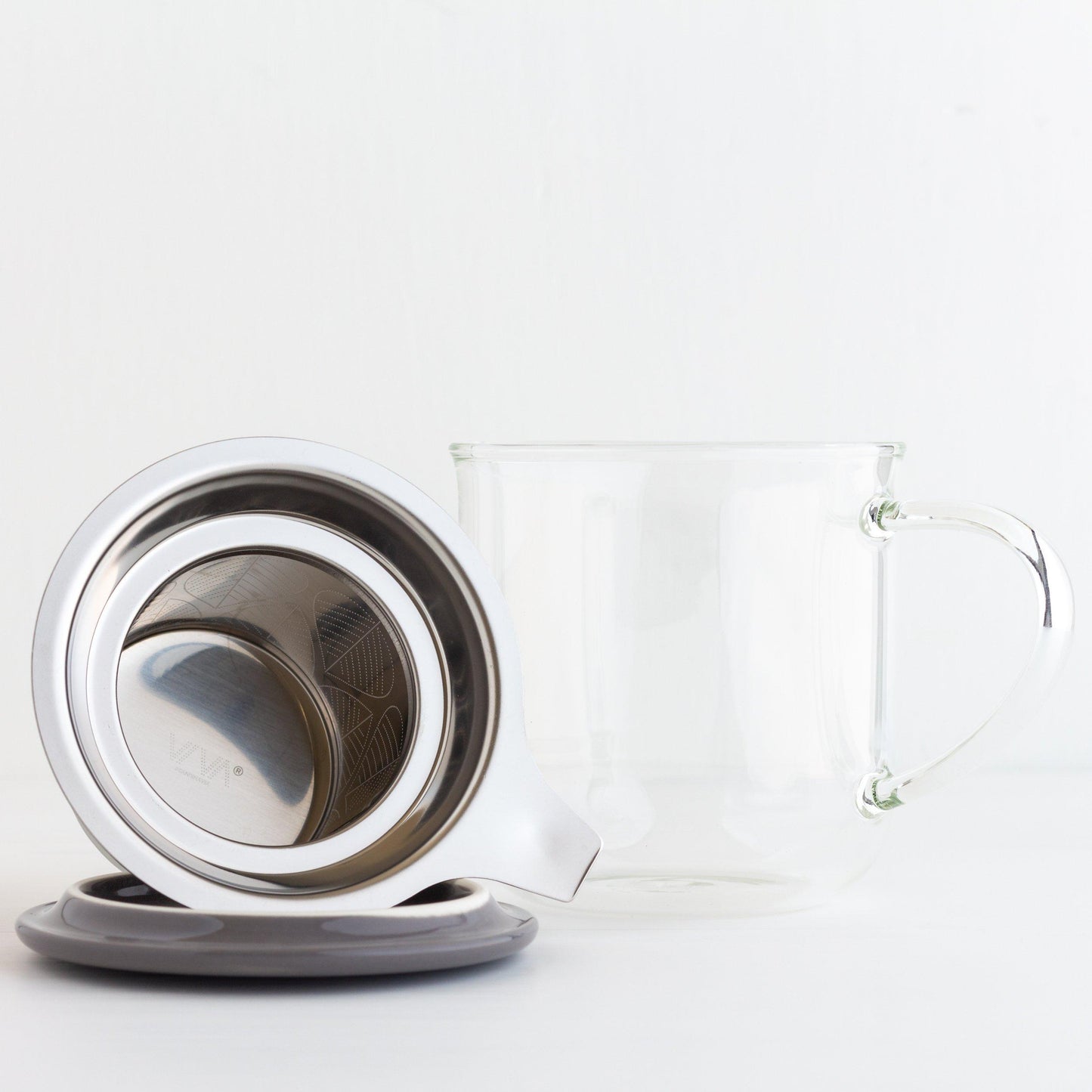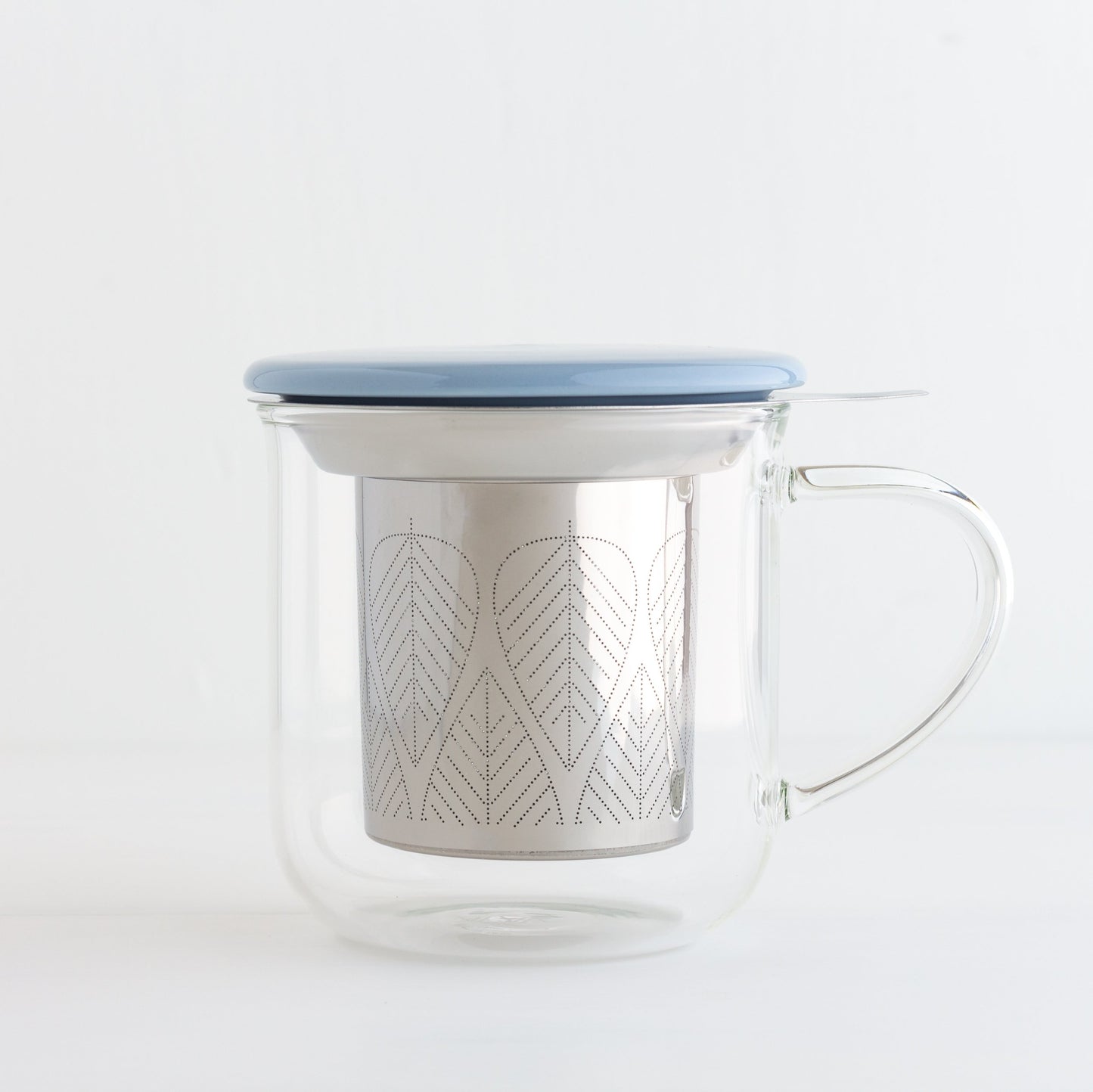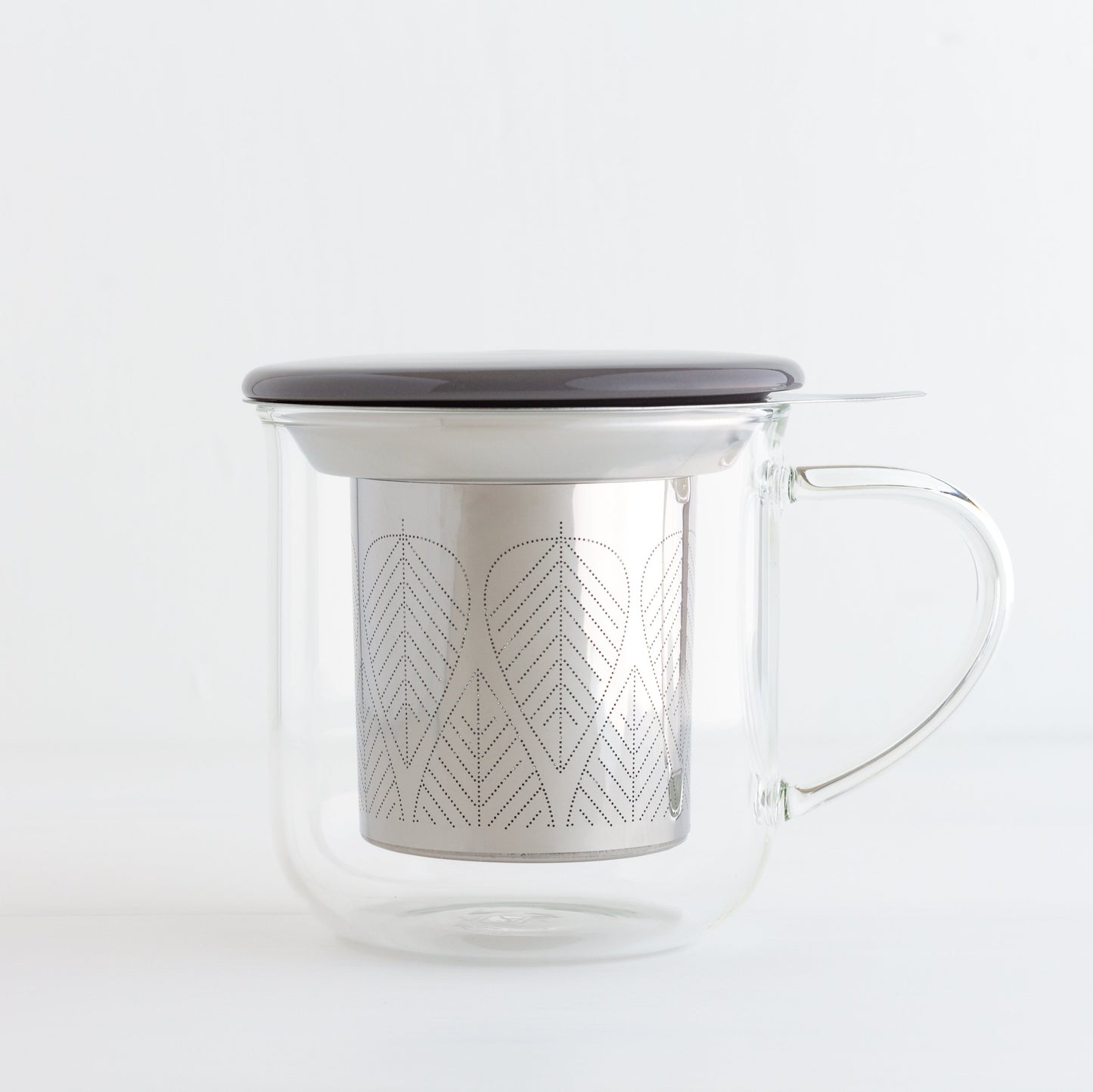How to brew loose leaf tea
What you’ll need:
- Loose leaf tea: You can use any kind of loose leaf tea, from purple to pu-erh and anything in between.
- Cup, mug, or pot: You’ll need something in which to brew your tea, like a favorite mug or a teapot.
- Tea infuser or filter: Preparing tea in a tea infuser or filter is the easiest way to prepare tea. If you don’t have one of these options, see our guide below to preparing tea without an infuser.
- Electric or stovetop tea kettle: You should use a tea kettle to heat your water. If you don’t have a tea kettle, you can also heat up water in a pot on the stove.
- Perfect cup tea scoop (optional): While not strictly necessary, a perfect cup tea scoop is a great way to easily measure tea leaves.
1. Gather your tools
Before you begin making a cup of tea, it’s a good idea to assemble everything you need. This includes the loose leaf tea you’d like to drink, your mug, cup, or pot, your infuser or filter, and your tea kettle. If you don’t have some of these items, don’t worry. There are plenty of ways to make loose leaf tea just using items you probably already have in your kitchen.
2. Heat your water
You should fill your kettle with cold, filtered water and turn it on. If you don’t have a stovetop or electric tea kettle, you can also heat up water using a pot on the stove. In a pinch, you can even heat up hot water in the microwave. The proper tea brewing temperature can range anywhere from 140 degrees for specialty green teas to 212 degrees (a full boil) for black and herbal teas, with plenty of gradations in between.
Water temperature is one of the most important elements of properly prepared cup of loose leaf tea. If you use water that is too hot, you could burn the tea leaves, while using water that is too cool can make your tea seem weak and bland. The water temperature can also influence the caffeine content in tea. Using water that is the perfect temperature for your tea is a great way to ensure a tasty cup.
That said, you don’t necessarily need any fancy equipment like an electric kettle with a temperature control. While these devices are handy, people have been brewing tea without them for hundreds of years. You can also simply pay close attention to the water in your kettle as it warms; depending on the type of tea, it may be ready when it first starts to steam, when it’s steaming briskly, or when it has reached a full boil.
Water temperature guidelines
- Black tea: 212 degrees
- Green tea: 175 to 180 degrees
- White tea: 175 to 180 degrees
- Oolong tea: 195 degrees
- Pu-erh tea: 212 degrees
- Purple tea: 175 to 180 degrees
- Herbal tea: 212 degrees
- Rooibos tea: 212 degrees
3. Measure your tea leaves
While heating your water, you should place an infuser or tea filter into your pot or cup and measure tea leaves into it. In general, we recommend using one teaspoon of loose leaf tea per six ounces of water. However, that’s not a hard and fast rule. For some especially “fluffy” herbal or white teas, you might want to use a heaping teaspoon instead of a flat teaspoon. If you like your tea a little stronger, you may also want to use more tea leaves.
Keep in mind that measuring tea leaves isn’t an exact science; feel free to eyeball it or use whatever spoon you have on hand. Once you’ve been making loose leaf tea for a little while, you’ll get a better sense of the amount of tea leaves you need depending on how strong you like your tea.
Tea measurement guidelines
- Black tea: 1 level tsp. per 6 oz.
- Green tea: 1 level tsp. per 6 oz.
- White tea: 2 level tsp. per 6 oz.
- Oolong tea: 1 level tsp. per 6 oz.
- Pu-erh tea: 1 heaping tsp. per 6 oz.
- Purple tea: 1 heaping tsp. per 6 oz.
- Herbal tea: 1 heaping tsp. per 6 oz.
- Rooibos tea: 1 level tsp. per 6 oz.
4. Steep your tea
Once your water has reached the desired temperature, the next step is to infuse your tea leaves. We always recommend pouring hot water over tea leaves, rather than spooning tea leaves into hot water. Pouring water over the leaves helps to ensure that every part of the leaf is saturated, which makes for more flavorful tea.
How long you should steep your tea will depend on what type of tea it is. Some teas should only be infused for a minute or two, while others can be infused for up to ten minutes. To get the steep time just right for your cup of tea, we recommend timing your brew. You can use a timer on your phone, a clock, or even a designated tea timer. Once you get the hang of infusing tea, you can also just estimate times based on your personal preference.
Tea steep time guidelines
- Black tea: 3 to 5 minutes
- Green tea: 1 to 2 minutes
- White tea: 2 to 3 minutes
- Oolong tea: 2 to 3 minutes
- Pu-erh tea: 5 minutes
- Purple tea: 3 minutes
- Herbal tea: 5+ minutes
- Rooibos tea: 5+ minutes
5. Remove your tea leaves and enjoy!
Once your tea is done steeping, you should remove the tea leaves from your pot or cup and enjoy your tea. If you prepared your tea in a pot or cup without an infuser, it’s a good idea to strain the tea and decant it into another vessel to prevent it from becoming too strong.
Tea preparation chart
| Amount of Tea Leaves | Water Temperature | Steep Time | |
|---|---|---|---|
| Black | 1 level tsp. per 6oz. | full boil (212°) | 3-5 minutes |
| Green | 1 level tsp. per 6oz. | steaming briskly (175-180°) | 1-2 minutes |
| White | 2 level tsp. per 6oz. | steaming briskly (175-180°) | 2-3 minutes |
| Oolong | 1 level tsp. per 6oz. | almost boiling (195°) | 2-3 minutes |
| Pu-erh | 1 heaping tsp. per 6oz. | full boil (212°) | 5 minutes |
| Purple | 1 heaping tsp. per 6oz. | steaming briskly (175-180°) | 3 minutes |
| Mate | 1 level tsp. per 6oz. | steaming (150-160°) | 3-5 minutes |
| Herbal | 1 heaping tsp. per 6oz. | full boil (212°) | 5-10 minutes |
| Rooibos | 1 level tsp. per 6oz. | full boil (212°) | 5-10 minutes |
How to make loose leaf tea without an infuser
If you don’t have a tea infuser, don’t despair! It’s pretty easy to make tea without an infuser in a pinch. Prepare your tea using the instruction above, placing your tea leaves directly into your pot or cup instead of into an infuser. When the tea is finished steeping, you can strain your tea using a small mesh strainer. If you don’t have a strainer, you can even use a coffee filter or a colander. Keep in mind that drinking tea that’s full of tea leaves isn’t bad for you - you just sometimes swallow a tea leaf or two, and the tea will continue to get stronger and more bitter as you drink.
FAQs
Can I use a tea ball to make loose leaf tea?
You. can definitely use a tea ball to make loose leaf tea if that’s what you have on hand, but we don’t recommend it for a couple of reasons. Most tea balls are too small to fit the amount of tea you need. Tea balls also don’t give tea leaves room to expand as they steep, which makes for a weaker, less flavorful cup.
Can I brew loose leaf tea in a coffee maker?
You can also brew loose leaf tea using a coffee maker such as a French press. However, we don’t recommend using the same French press to make both tea and coffee, or your tea might end up tasting a little like coffee grounds.
Can I cold brew loose leaf tea?
Yes, you can cold brew loose leaf tea! To cold brew tea, infuse your tea leaves with cold water instead of hot, then refrigerate your tea for eight hours or overnight.
